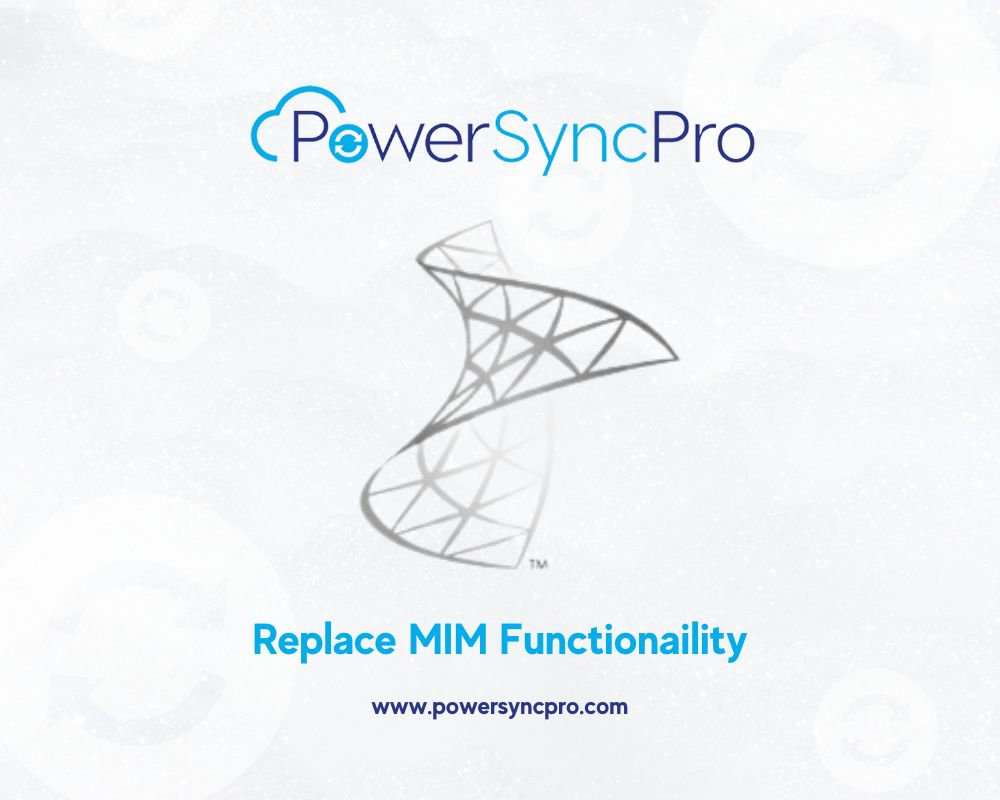PowerSyncPro is just such a tool, and can work seamlessly in the background to augment, and even replace, a large section of MIM functionality. A powerful, efficient directory sync tool that enables seamless large-scale identity synchronisation, PowerSyncPro helps organisations with hundreds of thousands of users, groups and contacts migrate their data with less downtime and disruption.
PowerSyncPro will also allow long-term synchronisation between platforms such as Microsoft Active Directory, Azure Active Directory, Exchange Online, Lotus Domino, Google and SQL Server, effectively allowing MIM-dependent infrastructure to coexist seamlessly alongside more modern cloud-based directory solutions.
There are some functions that currently cannot be migrated to Azure AD, such as the Password Change Notification Service (PCNS) captures AD password changes and forwards them to MIM, which forwards them again to target systems. If your organisation uses PCNS then your best option would be to retain MIM, and use PowerSyncPro to fill the functionality gap, and synchronise your systems with any other required directories and platforms. We would also recommend using PowerSyncPro to replace MIM plus BHOLD functionality, which is functionality not currently migrated to Azure AD.



